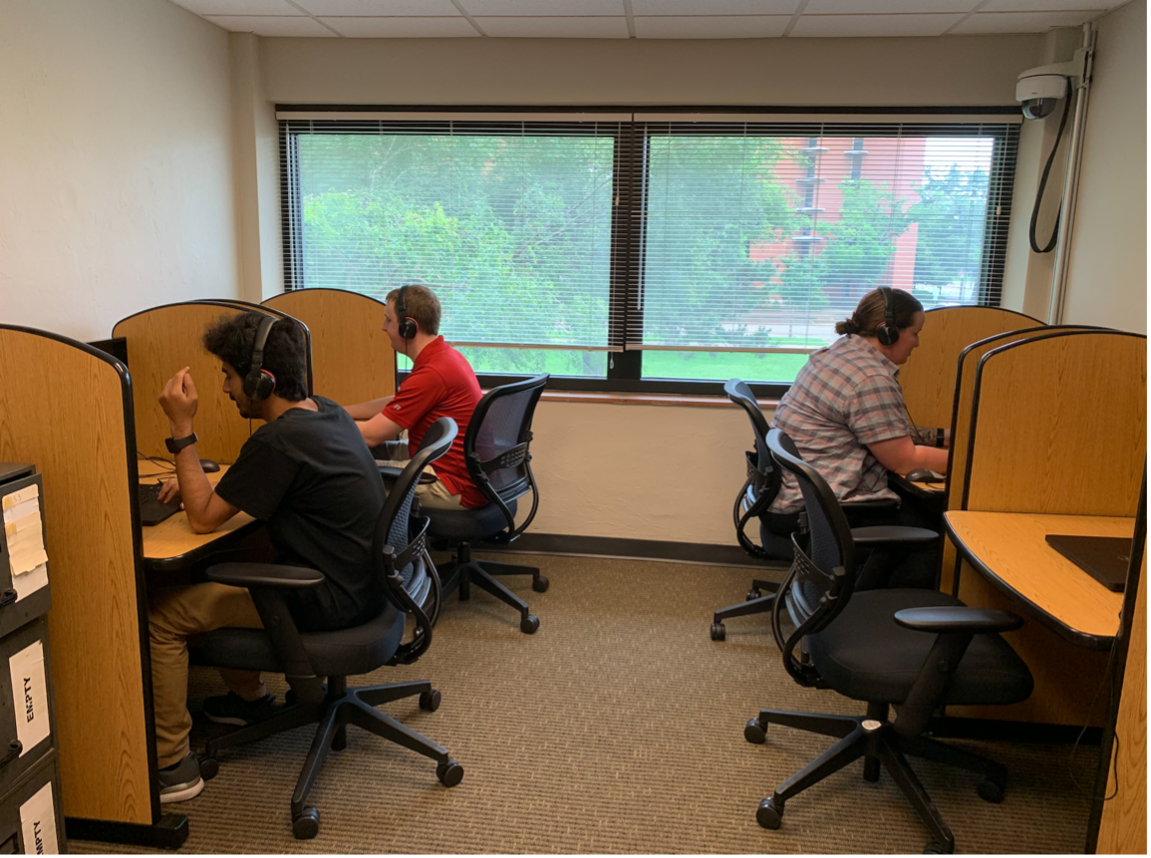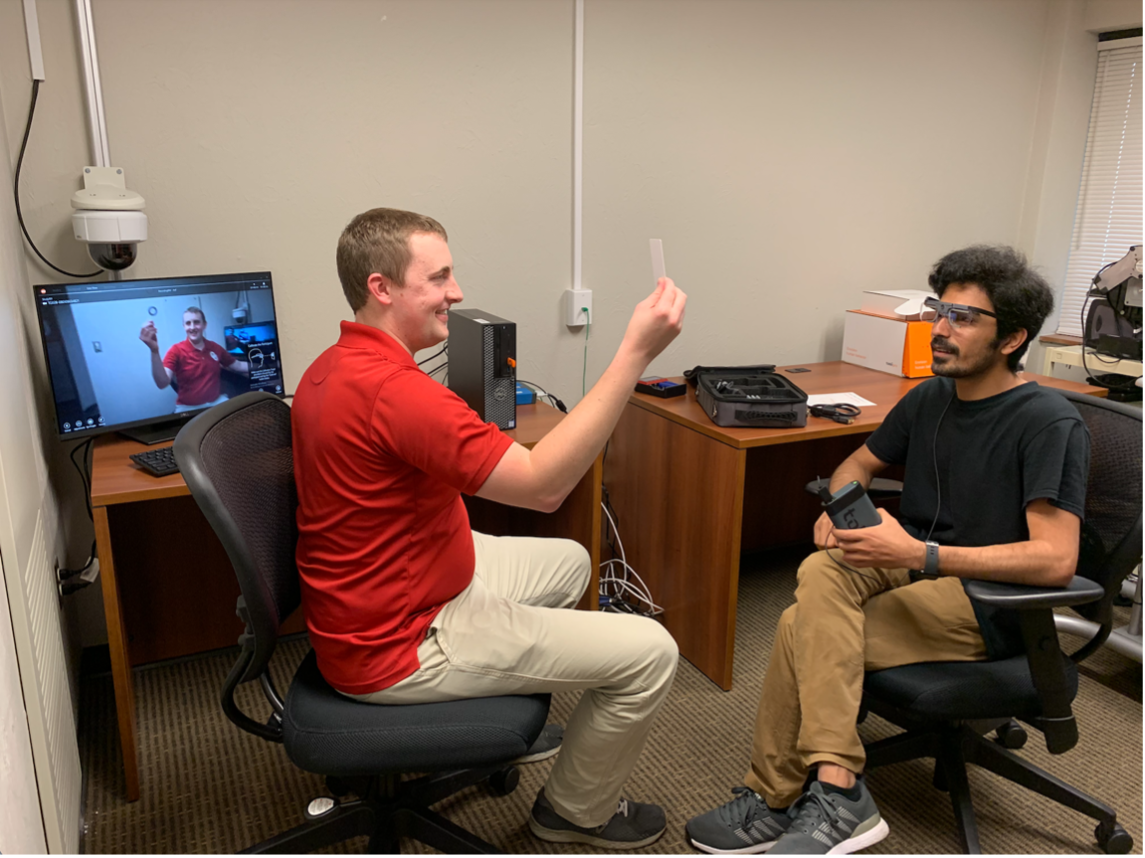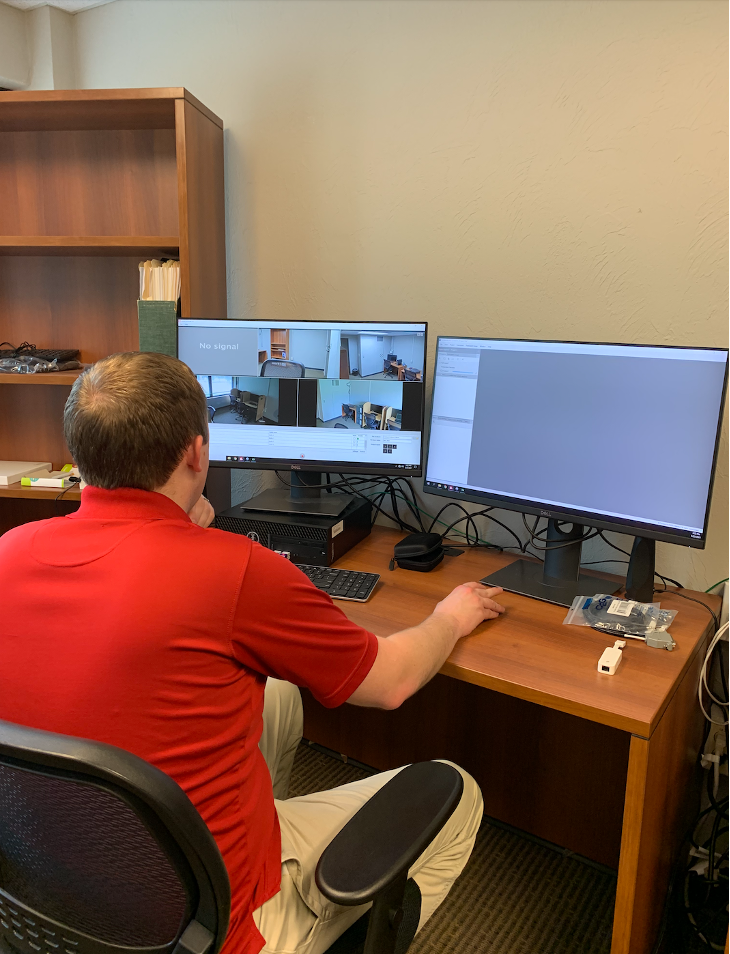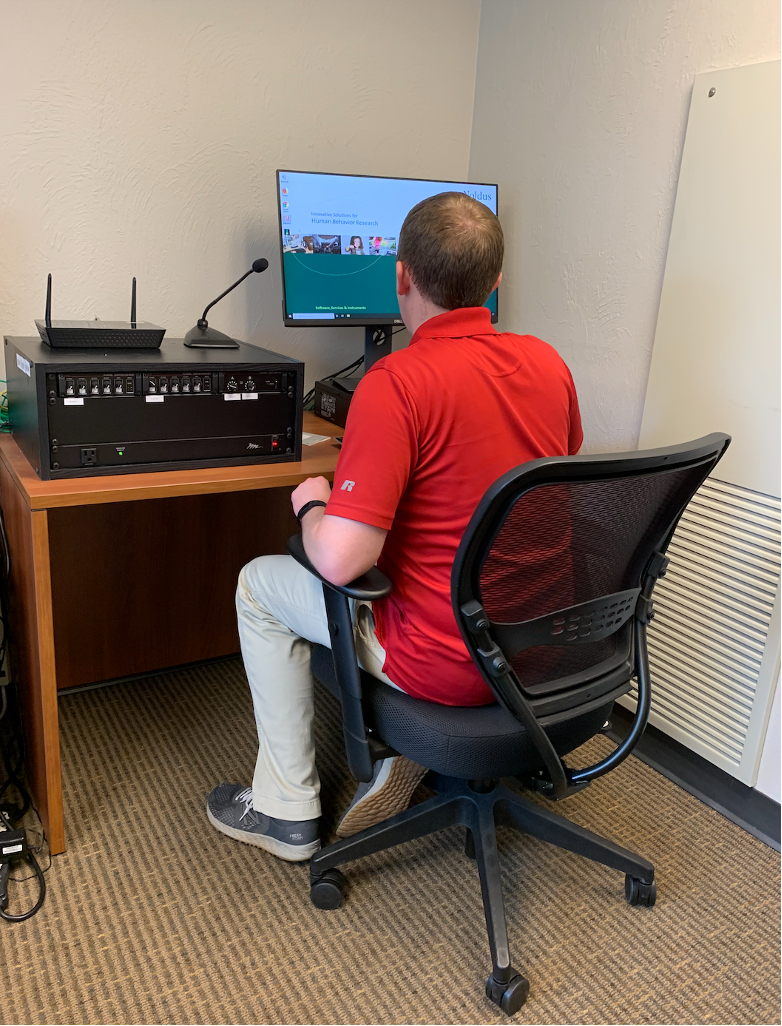Individualized testing room
OU Prime Lab
The OU PRIME Lab is a media psychology lab that is designed to conduct cutting-edge media psychology research that informs how individuals cognitively and emotionally process media. We in the OU PRIME Lab investigate the processes and effects of consuming media content including advertising, entertainment, and news content across a wide spectrum of technological platforms such as television, computers, and smart phones. The OU PRIME Lab specifically focuses on examining the cognitive and emotional responses that unfold during media exposure by measuring psychophysiological or “biometric” changes in cardiac activity, skin conductance, facial emotional coding, and electromyography. With the incorporation of psychophysiological measures, in addition to eye tracking, self-report, and memory measures, the OU PRIME Lab is capable of providing critical, precise, and holistic data for the evaluation and understanding of media psychological processes and effects. The lab is also a training ground for students to learn about media psychology and experimental research.
OU Visual Neuroscience Laboratory
The OU Visual Neuroscience Laboratory, directed by Dr. Michael Wenger, is housed on the University of Oklahoma’s research campus in Norman, Oklahoma. It exists as a partnership with Dr. Lei Ding and the Computational Neuromaging and Neuroengineering Laboratory and Dr. Lauren Ethridge and the Brain and Biomarker Laboratory. The centerpiece of the laboratory is the technology that allows collection of high-density electroencephelopgraphic data, concurrent with the ability to collect behavioral data in response to highly controlled visual displays. The lab currently supports collaborative work in three areas of research: (a) the effects of variations in systemic iron levels on brain function and cognition, (b) the effects of visual experience on the perceptual organization of the visual world, and (c) the basic characteristics of real-time processing and neural representation in the organization of visual inputs. The laboratory has supported a range of interdisciplinary collaborations and is available for new collaborations.
Ethical Choice Education Lab
The Ethical Choice Education lab at the University of Oklahoma focuses on policies and technologies that promote information transparency and helping to protect and understand the interests of diverse and vulnerable populations (e.g., surrogate medical decision making; food and water; natural resource management; Native American health; animal law). The lab takes inspiration from and has affiliations with diverse, interdisciplinary collaborators including psychology, philosophy, counseling, engineering, law, computer science, economics, and biology. These efforts combine to help illuminate the ways that we can help people make better, more informed decisions in a diverse world.
ECEL Facilities
The Ethical Decision Education Lab (Feltz) at the University of Oklahoma, housed on the second floor of the Cate Center 4, includes a 600sqft dedicated state-of-the-art research suite designed for cognitive process-tracing including group testing. This space can be utilized by graduate students and research scientists for survey development, storage, distribution, and analysis. Multiple fixed and mobile motion tracking cameras and audio recorders are available in each room. An eye-tracking (Tobi Pro) unit and facial recognition and analysis software (Noldus systems) are available and can be configured for use with a wide range of field or lab-based experiments (e.g., using websites, interacting with smart phones, or evaluating information, etc.).


Eye tracking calibration

Researcher checking camera access in all observation rooms

Control station mic allows for easy and instant communication with participants during studies
The Center for the Ethics of Indigenous Genomic Research

The center was launched with the award of a Center of Excellence in Ethical, Legal, and Social Implications Research from the National Human Genome Research Institute in 2016. The center provides infrastructure for both conceptua/normative and empirical work on the implications of genomics for American Indian and Alaska Native communities. Relying on a network of indigenous scholars and tribal community partners, we seek to develop research that is responsive to the shifting priorities of biomedical research and the enduring concerns of Native communities.
CASR Lead: Paul Spicer
Email: paul.spicer@ou.edu

